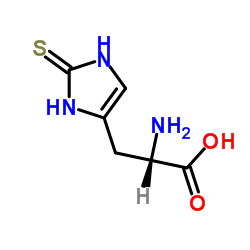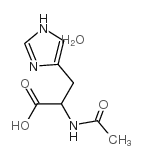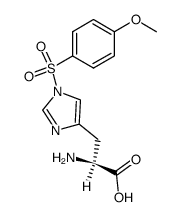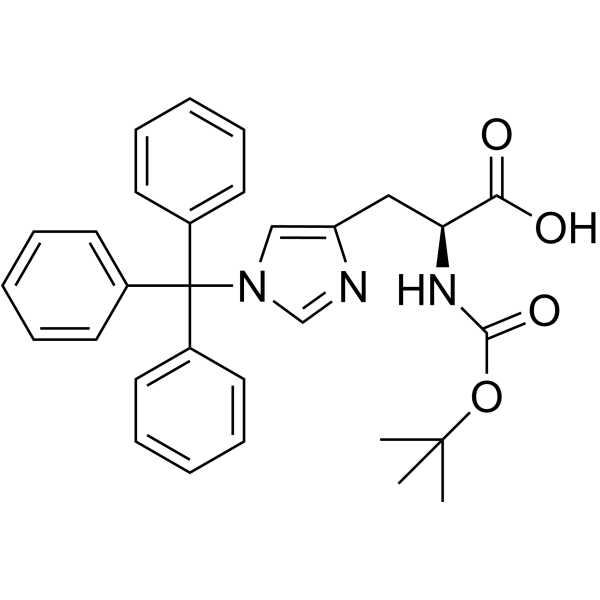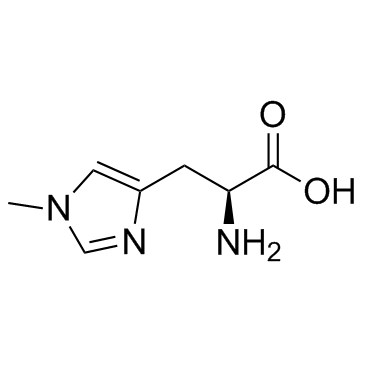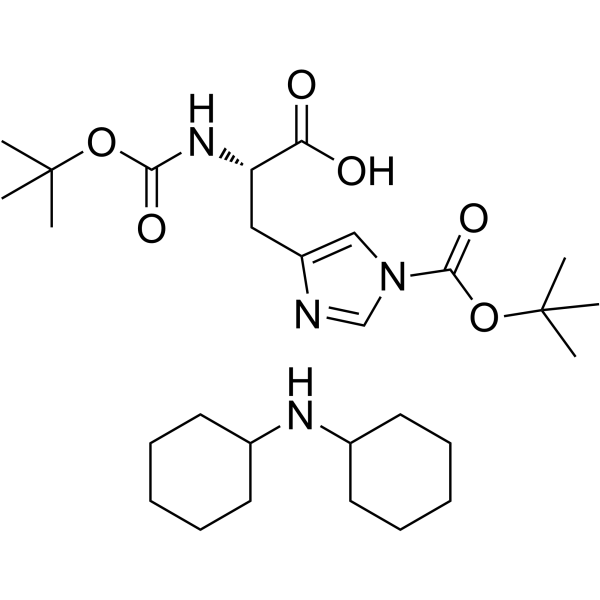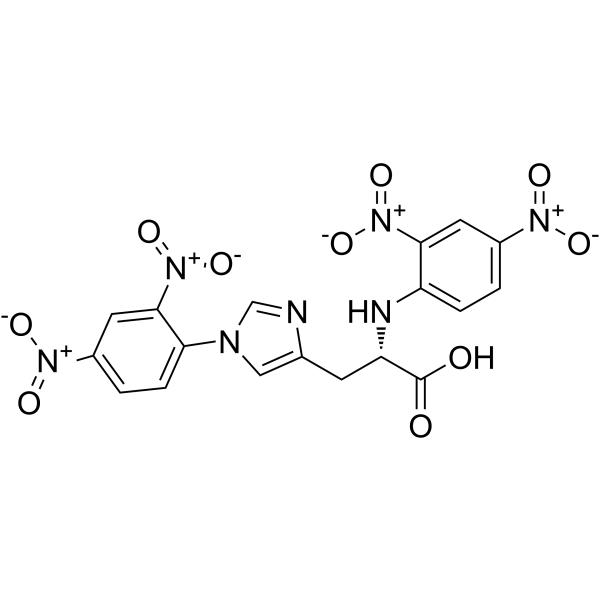71-00-1
| Name | L-histidine |
|---|---|
| Synonyms |
(S)-a-Amino-1H-imidazole-4-propanoic Acid
(S)-1H-Imidazole-4-alanine a-Amino-4(or 5)-Imidazolepropionic Acid d,l-histidine 1H-Imidazole-4-propanoic acid, α-amino-, (S)- FEMA 3694 (S)-histidine EINECS 200-745-3 HISTIDINE, L- His Histidine H-L-HIS-OH 3-(1H-imidazol-4-yl)-L-Alanine hydrogen L-histidinate L-His Histidin L-Histdine L-Hisidine MFCD00064315 L-Histidine H-His-OH |
| Description | L-Hisidine is an essential amino acid for infants. L-Hisidine is an inhibitor of mitochondrial glutamine transport. |
|---|---|
| Related Catalog | |
| In Vitro | L-histidine completely inhibits growth and its effect on viability is inversely related to FLO11 expression. L-histidine does not affect the viability of the Δflo11 and S288c strains. L-histidine dramatically decreases air-liquid biofilm formation and adhesion to polystyrene of the flor yeasts with no effect on the transcription level of the FLO11 gene. Moreover, L-histidine modifies the chitin and glycans content on the cell-wall of flor yeasts[1]. |
| In Vivo | L-histidine (100 mg/kg) completely inhibits the brain edema in thioacetamide-treated rats[2]. Histamine release stimulated by high K+ from the hypothalamus in the L-histidine diet group is 60% of that in the control group. However, the concentrations of other monoamines and their metabolites are not changed by the L-histidine diet. The open-field tests show that the L-histidine diet group spends a shorter amount of time in the central zone, and the light/dark box tests demonstrate that the L-histidine diet group spends a shorter amount of time in the light box, suggesting that the L-histidine diet induced anxiety-like behaviors[3]. |
| Animal Admin | Rats: TAA (300 mg/kg i.p) is given to animals daily for 3 days. L-histidine (100 mg/kg) is dissolved in saline and injected (i.p.) daily 2 hours before each TAA injection. To prevent hypoglycemia and dehydration, rats are given 12.5 ml/kg of fluid therapy (5% dextrose and 0.45% saline with 20 mEq/L of potassium chloride) every 12 hours, s.c. Normal controls receive saline (vehicle used for TAA), whereas another group of rats are given L-histidine alone (100 mg/kg) daily for 3 days. TAA-treated rats are clinically monitored, and stages of encephalopathy are graded[2]. Mice: The control group is fed with the AIN-93G purified diet that contains 5.08 g L-histidine/kg, whereas the L-histidine diet group is fed with AIN-93G that contains 1.28 g L-histidine/kg (25% of the histidine content in AIN-93G). To equalize the total amount of amino acids, glutamine is added to the L-histidine diet to counterbalance the changes in the histidine content (18.32 g L-glutamine/kg AIN-93G vs. 23.72 g L-glutamine/kg L-histidine diet). Both diets are isonitrogenous. At 8 wk of age, the mice are weighed and assigned to 2 different diets. The mice are allowed ad libitum access to water and their respective diets, and they are housed for at least 2 wk in the laboratory before starting the experiments[3]. |
| References |
| Density | 1.4±0.1 g/cm3 |
|---|---|
| Boiling Point | 458.9±35.0 °C at 760 mmHg |
| Melting Point | 282 °C (dec.)(lit.) |
| Molecular Formula | C6H9N3O2 |
| Molecular Weight | 155.155 |
| Flash Point | 231.3±25.9 °C |
| Exact Mass | 155.069473 |
| PSA | 92.00000 |
| LogP | -1.26 |
| Vapour Pressure | 0.0±1.2 mmHg at 25°C |
| Index of Refraction | 1.615 |
| Water Solubility | 41.6 g/L (25 ºC) |
CHEMICAL IDENTIFICATION
HEALTH HAZARD DATAACUTE TOXICITY DATA
MUTATION DATA
|
| Personal Protective Equipment | Eyeshields;Gloves;type N95 (US);type P1 (EN143) respirator filter |
|---|---|
| Hazard Codes | Xn: Harmful; |
| Risk Phrases | 22-36/37/38 |
| Safety Phrases | S24/25 |
| RIDADR | NONH for all modes of transport |
| WGK Germany | 2 |
| RTECS | MS3070000 |
| HS Code | 2933290090 |
| Precursor 10 | |
|---|---|
| DownStream 9 | |
| HS Code | 2933290090 |
|---|---|
| Summary | 2933290090. other compounds containing an unfused imidazole ring (whether or not hydrogenated) in the structure. VAT:17.0%. Tax rebate rate:13.0%. . MFN tariff:6.5%. General tariff:20.0% |



